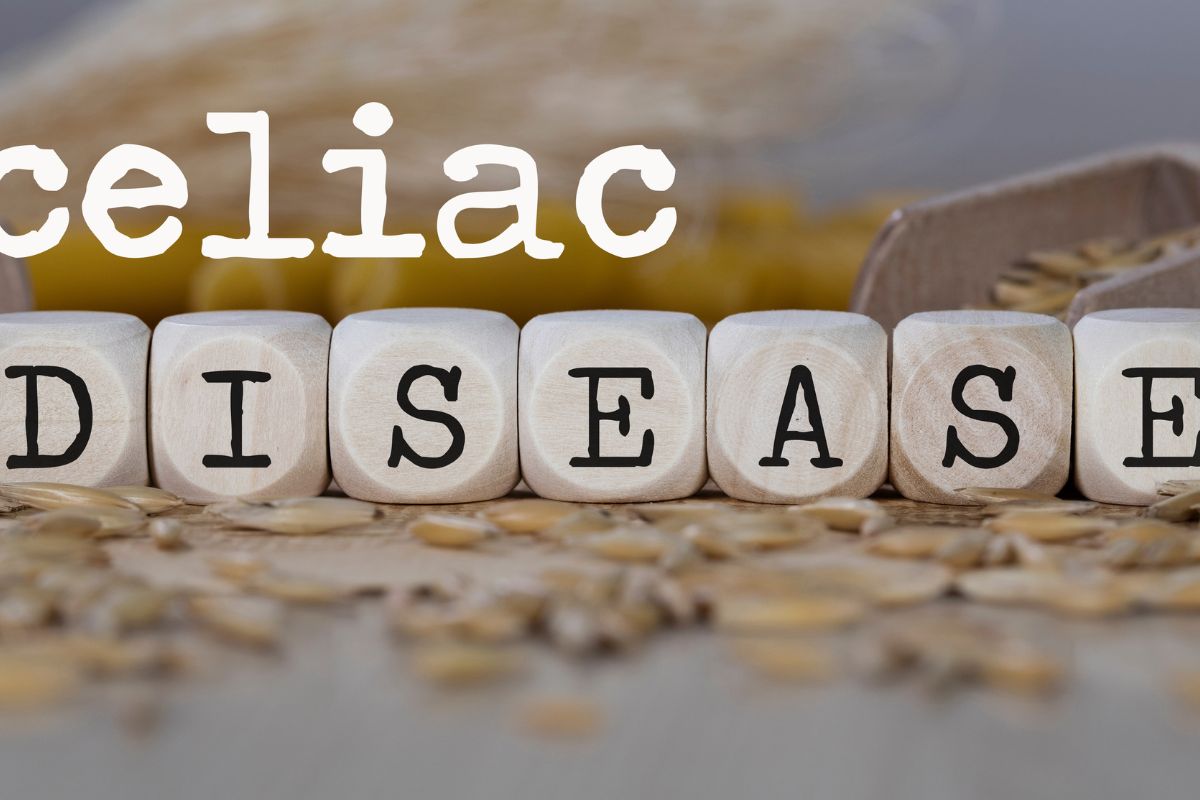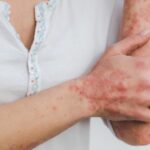Need to know more about celiac disease or concerned that you might have it? Read this post and learn everything you can to decide if you need to seek medical attention.
Celiac disease can become very serious if left untreated. Because of this, you should get a diagnosis as quickly as possible, and make the necessary life changes.

To find out more about celiac disease, keep reading.
What is Celiac Disease?
Celiac disease is a type of autoimmune disorder, which gets triggered when gluten is ingested. Individuals with this disease should not eat gluten, or else their body will overreact to it.
When this happens, proteins in their body will damage the small intestine’s villi. If the villi get injured, the small intestine will not be able to absorb the nutrients from food as they should, which can lead to malnourishment, among other issues.
It’s important to note that celiac disease and gluten intolerance are not the same thing.
An In-Depth Look at Celiac Disease
What Causes it?
The cause of celiac disease is unknown, but it is thought to be genetic. This disease can be triggered by traumatic events, such as viral infections, emotional trauma, pregnancy, or even surgeries.
How is Celiac Disease Diagnosed?
There are a number of tests that can be done in order to identify and diagnose celiac disease. These are primarily blood tests, but a range of other tests can also be done.
Below is a list of possible diagnosis routes that a medical professional may take to diagnose celiac disease in an individual:
- Intestinal fatty acid binding protein tests show if there’s damage to the intestine.
- Vitamin D, B12, and folate tests look for vitamin deficiencies.
- Swallowing a small camera can show problems in your digestive tract.
- Iron and ferritin tests look for iron deficiency.
- Blood tests check other parts of your immune system.
- C-reactive protein tests show if there’s inflammation.
- Serology tests look for certain antibodies.
- A complete blood count looks for anemia (low red blood cells).
- Metabolic panels test liver and kidney function.
- Imaging tests show signs in the intestine, like wall thickening or changes to blood vessels.
- Genetic testing looks for human leukocyte antigens to rule out celiac disease.
NOTE FOR ANTIBODY TESTS – Anyone who is on a gluten-free diet will need to revert to a “normal” diet so that any antibody tests done will give accurate readings.
If you remain on a gluten-free diet before having your tests done, results will be inaccurate, which can lead to a diagnosis not being made when it should.
NOTE FOR RASHES – if the person getting tests for celiac disease has a rash, the medical practitioner will be required to take a sample of the skin.
This will be done to determine whether the rash is caused by celiac disease or something else. It is easy to confuse this rash for a number of other skin issues you may experience.
NOTE FOR A POSITIVE CELIAC TEST RESULT – if you have done blood tests that have come back positive for celiac disease, an endoscopy will likely have to be carried out.
This will allow the medical professional to determine if there is any damage to your small intestine.
Symptoms of Celiac Disease
In adults:
- Nervous system injury, changes in awareness, numbness or tingling of the hands or feet, or balance issues
- Headaches or fatigue
- Feces that are unusually pale, smells worse than usual, or floats (steatorrhea)
- Anemia
- Gas
- Abdominal pain
- Bone or joint pain
- Diarrhea
- Nausea
- Heartburn
- Constipation
- Mouth ulcers
- Itchy, blistery rash (doctors call this dermatitis herpetiformis)
- Bloating or a feeling of fullness
- Weight loss
In children:
- Upset stomach or vomiting
- Diarrhea
- Bloating or belly swelling
- Pale, foul-smelling poop
- Constipation
- Weight loss
If the needed nutrients don’t get absorbed, further symptoms children can experience. Please note that these symptoms may not always be present, which can make diagnosis very difficult.
Things to look out for will include the following:
- Failure to thrive, in infants
- Crankiness or mood changes
- Neurological problems like learning disabilities and attention deficit hyperactivity disorder (ADHD)
- Anemia
- Delayed puberty
- Slow growth and short height
- Damaged tooth enamel
Celiac rash is a common symptom among people who have this disease. This rash occurs in roughly 1 in 4 people, and you may experience a blistering and itchy rash.
This typically happens more in adult men and are usually found in the following areas:
- Scalp
- Buttocks
- Knees
- Lower back
- Elbows
Risk Factors of Celiac Disease
Unfortunately, research has been unable to identify what causes celiac disease. We do know that it is something that typically runs in families, suggesting that it’s linked to genetics.
However, it has been found that any kind of stressful event can trigger celiac disease in individuals. This can include things like surgery, viral infections, pregnancy, or emotional trauma.
If you know someone in your close family who has it, such as a sibling or parent, there is a 1 in 10 chance that you have it or will get it, too.
It has been found that this disease is the most prevalent among Caucasians, and those who have it often have one or more of the following diseases listed below:
- Sjogren’s syndrome
- Lactose intolerance
- Addison’s disease
- Multiple sclerosis (MS)
- Psoriasis
- Lupus
- Scleroderma
- Autoimmune hepatitis
- Intestinal lymphoma
- Type 1 diabetes
- IgA nephropathy
- Hashimoto’s thyroiditis
- Intestinal cancer
- Idiopathic dilated cardiomyopathy
- Chronic pancreatitis
- Rheumatoid arthritis
- Irritable bowel syndrome (IBS)
- Primary biliary cirrhosis
- Williams syndrome
- Turner syndrome (a condition in which a female is missing an X chromosome)
- Down syndrome

Complications Associated With Celiac Disease
There are a number of complications that are linked to celiac disease. This refers to additional health issues that celiac diseases might bring on if it is left untreated.
Some of these can be incredibly dangerous if they are left untreated.
Below are the known complications that this disease has been associated with:
- Damaged tooth enamel
- Malnutrition
- Lactose intolerance
- Pancreatic disease
- Cancer, including intestinal lymphoma and small bowel cancer
- Nervous system problems like seizures or pain and numbness in your hands and feet (peripheral neuropathy)
- Weak bones
- Infertility and miscarriage
What if Celiac Disease Goes Untreated?
Celiac disease will worsen if you leave it untreated. This can cause damage to the small intestine, and you are likely to suffer from various complications associated with the disease.
Celiac Disease Treatment
There are currently no drugs that are able to treat celiac disease. The only thing you can do if you find that you have celiac disease is change your diet. If you are diagnosed with celiac disease, you should do your best to avoid any foods that contain gluten.
Unless something is specifically labeled as being gluten-free, there are a number of foods that you should avoid, including the following:
- Noodles and pasta
- Beer
- Crackers
- Pancakes
- Cakes, breads, and other baked goods
- Gravies and sauces
- Cereals
- Breading
Many of the above foods can be made to be gluten-free, so it’s always worth looking for these options. However, there are specific foods to look out for which will always contain gluten.
These are as follows:
- Malt
- Farina
- Semolina
- Rye
- Wheatberries
- Graham
- Durum
- Brewer’s yeast
- Farro
- Wheat
- Wheat starch
- Spelt
- Einkorn wheat
- Barley
If you are looking for an easy list of foods that will never contain gluten, you can look for these kinds of foods:
- Nuts
- Beans
- Fruits
- Dairy
- Vegetables
- Fish (and other seafood)
- Poultry and meat
For gluten-free starches, you can look for any of the following foods:
- Sorghum
- Chia
- Quinoa
- Tapioca
- Corn or maize
- Potato
- Flax
- Rice
- Soy
- Amaranth
- Beans
- Millet
- Nut flours
It’s important to note that while some of these foods make up the main ingredient of a number of processed foods, it’s always important to carefully check labels.
Many processed foods that you might not think have gluten, do have gluten.
As such, check the labels of these foods before purchasing or consuming:
- Granola or energy bars
- French fries
- Soup
- Salad dressings and marinades
- Potato chips
- Soy sauce
- Meat substitutes such as seitan or veggie burgers
- Candy or candy bars
- Lunch meats
It’s also worth noting that there are plenty of products that contain gluten, which you might not automatically think of. Some of these examples include things like many medications, and even toothpaste.
Because of this, always check labels and ingredient lists of these kinds of products before you buy them. If you buy them for your family, make sure that you label them to ensure that you or someone else doesn’t consume them accidentally.
If you are found to be lacking nutrients, then your medical professional may prescribe you gluten-free vitamins or mineral supplements. For skin rashes, medication will also be given.
Once you stick to a gluten-free diet for a few weeks, you should begin to feel noticeably better, and your small intestine will begin to heal.
A Summary
Celiac disease is an autoimmune disease that has been linked to a number of complications and risk factors. Those with this disease should not eat gluten, as gluten will cause a reaction in the body.
There are a number of common symptoms to look out for, but some individuals with this condition might not even know they have it until blood work is done.
If someone like a parent or sibling has celiac disease, you should get tested, as you have a high chance of having it, too.
- Understanding Male Reproductive Health: A Complete Guide - February 2, 2025
- Simple Healthy Skin Habits for Radiant Skin - December 6, 2024
- Unlocking the Connection Between Nutrition and Mental Health - December 3, 2024








